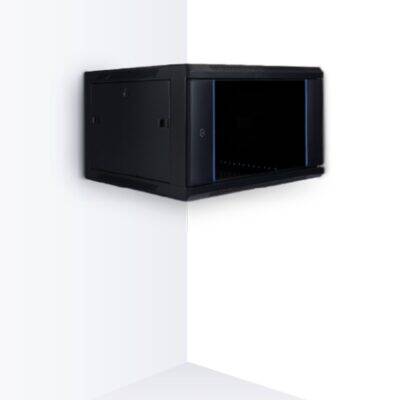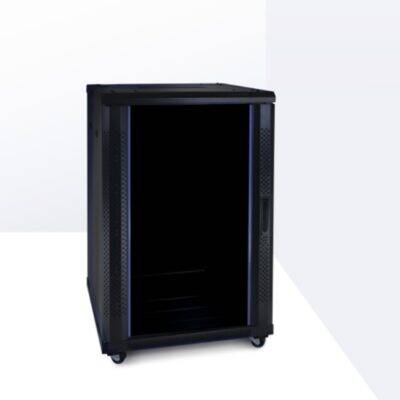Rack cabinets
2023-01-31
A rack cabinet has many terms, e.g. a telecommunication cabinet or an ICT enclosure. It is an essential element of the mounting system for IT equipment. The development of telecommunications at the turn of the 19th and 20th centuries led to the need to create innovative equipment that would facilitate the organization of equipment operation and allow for the best use of space. The first telephones were not introduced to the market until the 1950s, while telephones that were generally available to the average consumer were released in the 1970s. Until then, telecoms had to deal with the challenge of thousands, and later tens, if not hundreds thousands of cables converging to the telephone switchboard.
In 1911, the term “relay rack” was coined for the first time in history, and in 1922, AT&T's engineering department introduced 19-inch cabinets, with a basic unit occupancy equal to 1 ¾ inch (or 44.45 mm). This enabled the best use of space for amplifiers and cable terminations in telephone exchanges. In the later period, the computer network began to develop dynamically, which from the beginning of its existence was integrated with telecommunications networks. It was therefore a natural course of events that the development of the new branch became a priority and it was necessary to meet the potential of computer networks. This is how the rack standard was born. Currently, rack cabinets are used to organize network, telecommunications or CCTV devices.
Construction and use of a rack cabinet Racktel
Rack cabinets are usually made of steel and aluminum. However, structures can also be made of materials such as fiber-reinforced polymers or Kevlar enclosures. The main application of 19″ is to place and organize the active and passive elements that are part of the ICT network. Thanks to the innovative development of the device, we can also use them in recording studios, power engineering or CCTV monitoring. Thanks to the fact that manufacturers in the IT industry adhere to the standard of workmanship, their equipment will find a place in 19″ rack cabinets.
U Unit – What does it mean?
Each of the modern computer network devices, in the specification, has a significant value written in “U” units, there is also the notation “HU” (High Unit) or “RU” (Rack Unit).
„U” it is a standard unit of length used in the computer and electronics industries to indicate the height of modules and assemblies and the size of racks. 1 U is 1 ¾ inch or 44.45 mm.
Types of cabinets
Hanging wardrobes – as the name suggests – are mounted on the walls, thanks to which the space on the floor is free. These cabinets have an elegant appearance, so they can be used in various types of rooms. They are designed for the assembly of smaller amounts of telecommunication or monitoring devices. The maximum permissible load of these cabinets is usually 60 kg.
They fall into two categories: one-section and two-section. We use two-section constructions when we want convenient access to the wardrobe from both sides. It is an additional space at the back of the wardrobe, separated on hinges, thanks to which the entire wardrobe can be opened from the back, without unscrewing the wardrobe.

Standing wardrobes – equipped with wheels or feet that allow for a convenient change of location if necessary. When choosing a rack cabinet, we should be guided by the amount of equipment that is to be inside (preferably assuming the possibility of expansion, and also pay attention to air circulation – cooling). The maximum load of standing cabinets is much higher than that of hanging cabinets, because it is up to up to 1000 kg. Standing cabinets, apart from mobility, are easy to expand and ventilate even with a large amount of equipment.

How to choose a cabinet?
Our cabinets are offered in a width of 600 mm, which is an ideal size for ensuring good air circulation. A wider wardrobe could disturb it, and apart from exceptional situations, a larger width is not needed either – all devices have connections and controls on the front and rear console only. If we know the U-heights of devices and accessories, which are most common in the range of 1U to 4U, we can easily plan the installation. We should remember that height in U units is the internal mounting dimension, not the external dimensions of the device. Let us remember that the overall depth of the cabinet does not directly tell us what depth the device can be mounted in the cabinet. Cabinets for various purposes have a different internal structure and allow the rack rails to be spread to the front and back of the cabinet to a different extent.
Important criteria:
- amount of equipment
- location / available space
- tightness class
- legs / wheels / hanging
- type of assembly
- one-section / two-section
- color / material
